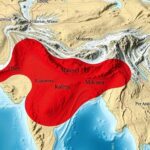Politics
ASIA, CHINA EARTHQUAKE NETWORKS CENTER, DI, DIZAN BHATTARAI, EARTHQUAKES, FLOODS, HIMALAYAS, INDIA, KATMANDU, LANDSLIDES, LILATHAR AWASTHI, MONSOON SEASON, NATIONAL DISASTER RISK REDUCTION AND MANAGEMENT AUTHORITY, NATURAL DISASTERS, REUTERS, TIBET, TIBET EARTHQUAKE, TRUMP, US GEOLOGICAL SERVICE
Nia Simpson
Severe Earthquake in Tibet: Immediate Aftermath and Rescue Efforts
A 6.8-magnitude earthquake struck near Tingri, Tibet, resulting in at least 53 deaths and significant injuries. The quake, occurring at a depth of 10 km, affected surrounding regions, prompting emergency rescue efforts by Chinese authorities. The seismic activity in the Himalayas is a recurring issue due to tectonic movements, necessitating robust disaster management strategies.
On Tuesday, a significant 6.8-magnitude earthquake struck near Tingri in Tibet, resulting in at least 53 confirmed fatalities and numerous injuries. Occurring at 9:05 a.m. local time at a depth of 10 kilometers, the earthquake was felt not only in Tibet but also in neighboring regions, including Nepal, Bhutan, and northern India. Initial reports indicated extensive shaking, leading to concerns of potential damage in these areas, particularly among remote villages near the epicenter.
Chinese authorities reported that the tremor caused damage in the Shigatse region, prompting President Xi Jinping to call for immediate search and rescue operations to minimize casualties. The historical context of seismic activity in this region is noteworthy, given that it frequently experiences earthquakes due to the tectonic interactions between the Indian and Eurasian plates. Past events, such as the 2015 magnitude 7.8 earthquake near Kathmandu, underscore the vulnerability of this area to devastating seismic activity.
The recent earthquake was notably close to Mount Everest, approximately 80 kilometers away, and has raised concerns among the local population regarding infrastructure and safety. Efforts are ongoing to assess the extent of the damage across various communities, with significant aftershocks further complicating rescue efforts. Rescue teams have been mobilized to assist the affected populations, especially considering the challenging winter conditions.
Reports from the Nepalese authorities indicated that tremors were felt across numerous hill districts bordering Tibet, although no immediate reports of loss of life were confirmed in Nepal. This situation is critical as information collection is complicated by the remoteness of certain areas. The earthquake further highlights the necessity for coordinated disaster management and preparedness in earthquake-prone regions of the Himalayas.
Overall, the earthquake has created urgent challenges as local and national authorities work diligently to rescue trapped individuals, provide necessary aid, and establish communication with remote areas affected by the tremor. As recovery efforts unfold, the focus remains on ensuring the safety and well-being of all communities impacted by this natural disaster.
The region encompassing Tibet, Nepal, and parts of northern India is seismically active due to the ongoing collision between the Indian and Eurasian tectonic plates. This geological interaction has historically led to numerous earthquakes, some of which have caused significant loss of life and property. Understanding this background is crucial to appreciate the ongoing risks and challenges posed by such natural disasters in these areas, as well as the importance of preparedness and efficient response strategies.
The devastating 6.8-magnitude earthquake near Tingri, Tibet, has resulted in tragic loss of life and injuries to dozens more. The event highlights the seismically active nature of the region and prompts immediate action from local and national authorities to conduct rescue operations and provide humanitarian assistance. As recovery efforts are initiated, collaboration across borders will be essential to address the impacts and enhance preparedness for future seismic events.
Original Source: www.arabnews.com








Post Comment